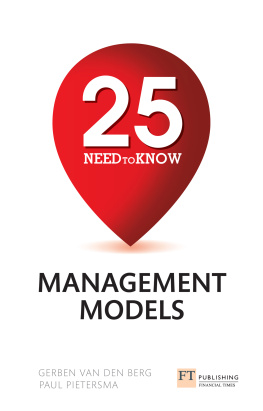Copyright (c) 2015 GRIN Verlag / Open Publishing GmbH, alle Inhalte urheberrechtlich geschtzt. Kopieren und verbreiten nur mit Genehmigung des Verlags.
Bei GRIN macht sich Ihr Wissen bezahlt! Wir verffentlichen kostenlos Ihre Haus-, Bachelor- und Masterarbeiten.
Jetzt bei www.grin.com hochladen und weltweit publizieren.
1.0 INTRODUCTION
The interesting cheese story told in a book written by Dr. Spencer was amazing, it has no direct references to cheese or any of that kind to theories, the name of his book is Who Moved The Cheese. In this book it depicts a story where there are four imaginary characters mentioned. There are two mice, one named Sniff and the other is Scurry and there are also these two little people, small in size but acts like people their names are Hem and Haw. Their characters are simplified in the table below.

They live in a maze looking for their own special cheese for living. In the story, t hese four characters go daily to eat cheese at a place called Cheese Station C, and this they do it everyday without fail. Over a period of time, gradually the little people (Hem and Haw) started slacking in punctuality and often reach the destination in a complacent mode. Their confident level was high; assuming that the cheese will
forever be there and there is no need to worry about it. So why race and hurry to eat it as it has always been there. Till one day there was a moment when they went to the usual place to eat the cheese and sadly there was no more cheese left in there. This situation they did not even notice on what was happening, meaning not realising the cheese getting lesser and lesser day by day. Hem and Haw had lots of plans in place based on the cheese, they could not accept the fact that it is no longer there and kept looking around the Cheese less Station C areas, shouting Who Moved My Cheese! They wasted time denying the change that has already taken place. All kinds of the negative perception, thoughts and words clouded their mind.
On the other side of the story, Sniff and Scurry was consistent and continued their normal routine. They were not surprised when one day they discovered that there was no more cheese left because they had noticed the amount getting smaller day by day. As things have changed (no more cheese), they searched elsewhere for new cheese and finally found Cheese Station N.
In this story Haw was positive thinking person as opposed to Hem. He wanted to move on and search for new cheese elsewhere with Hem but Hem was adamant and reluctant to move out from his comfort zone, i.e out of his familiar territory. Without being afraid, he has to leave the stubborn headed Hem behind as he gambled his life in the search of new cheese since it is better to be late than never. He kept moving and each wall he bumped into he would write some positive words thinking of Hem who he believed would be trailing behind him and these words
would be an indicator that Haw has gone past these areas. Of course some words were motivational and food for thought. Sharing below are some examples of it:
Imagining yourself enjoying your new cheese leads you to it.
When you stop being afraid you feel good,
Old beliefs do not lead you to new cheese,
Noticing small changes early helps you to adapt to the bigger changes that are to come.
Haws journey was challenging but he kept on going because along the new path he found some cheese to eat, and these were only enough to fill his stomach which he is not confident for future needs. Haw kept on visualizing, imagining, feeling and painting pictures about finding cheese, smelling and eating it, savouring its flavour. Finally, due to his determination and positive attitude he found Cheese Station N with lots of cheese which was tastier and in there he also met the other two friends, Sniff and Scurry. To Haw, quote Johnson (2007) change had turned out to be a blessing in disguise as it led him to find better cheese. If he were to have stayed back with Hem, he probably might have died of hunger or starvation. His positive attitude to change and move out of the comfort zone has rewarded him with tastier and
lots of cheese for him to survive. The ending of this story is based on the readers perception because it goes like this:
Haw heard what he thought was the sound of movement out in the Maze. The noise grew louder, he realised that someone was coming. Could it be that Hem wasarriving? The answer could have been a YES or a NO. If it was Hem, surely Haw will be overjoyed to see him. If NO, Haw will be saddened and the possibility is it could be someone else passing along that way.
2.0 CHANGE
The only person in the world who really wants to be changed is a baby with a wet nappy said Clifford Taylor, vice president of HR at Mead Johnson Asia cited by Zolkifli 2012. Change happens to all of us as individuals and adapting to changes is one of the most difficult things to accept or face in life. People cannot live with change if there is not a changeless core inside them (Covey, 2004). In organization, managing change can be a scary process for the organization and its people (Zolkifli, 2012). There are people who are hardly able to cope with life if they think that everything is against them. Some assume that sooner or later things will fall into place and it would be alright to wait (like Hem). But if it does not, then there is a real
danger because they are not able to take it. People fear of change. Due to this, there exist emotional changes; suicide or attempt to suicide to give up living, isolate oneself from people, sulking and refuse to speak to anyone, there is resentment. Normally emotions take some time to well up and it is longer to die down (Edward, 2000).
In this essay, I would relate changes to be dealt with at work place and also in our lives connecting it to the story Who Moved The Cheese summarised in the previous pages.
2.1 Staying In Jobs
The biggest cultural shift in Malaysia and indeed the world is cash, is still king for many where it is believed to be sitting on the scale of happiness. This means staying in jobs has relevance to employee perks and remuneration. It is true that many say that we cannot force ourselves to get the job done with a smile on our face just because of a pay cheque. So there exist attrition and in some companies the turnover rate is high when people are no longer happy working with that organization. Wong 2012 reported according to Malaysian Employers Federation (MEF), Malaysian companies are seeing an attrition rate of between 9.6%, based on its survey conducted on executive positions between June 2010 and July 2011, a total of 143 companies across the various sectors nationwide. Furtherance to this survey, I would like to refer to the recent survey of 1,145 Malaysian employees by
JobStreet.com where the survey found 78% to be unhappy at work cited by Zolkifli 2012. Very few reasons were about money or cash (Zolkifli, 2012). Of course the
study is not representative of all employees in the country but it still works as a wake-up call for employers to realise whether the assumptions on their needs are true. Assuming that the survey speaks volume of the entire workforce in Malaysia then money is no longer the number one reason why people are unhappy at work. There must be other reasons to it and what can be the reaction? Definitely change, leave the job for greener pasture, letting go of the existing job and look for other jobs to their satisfaction. Employees leaving companies will always be a perennial problem (Mahalingam, 2013). People do not wait patiently and stay in jobs like those days but change jobs when the find it is timely to do so.











